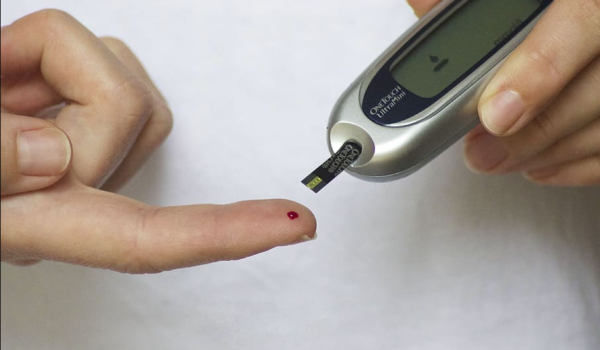Diabetes – a chronic condition afflicting millions worldwide. While those with diabetes can effectively manage their condition with proper care, in certain cases, a diabetic emergency can arise.
The aim of this article is to explore signs, symptoms, and appropriate responses to diabetic emergencies from a medical perspective.
Understanding Diabetes and Diabetic Emergencies
Diabetic emergencies can occur in both type 1 and type 2 diabetes patients. These critical situations can pose serious health risks and require immediate medical attention. Two common types of diabetic emergencies are hypoglycemia and hyperglycemia.
Hypoglycemia (low blood sugar): Hypoglycemia occurs when blood sugar levels drop below normal. This can happen due to excessive insulin intake, prolonged fasting, intense physical activity, or skipped meals. Timely recognition and treatment of hypoglycemia are crucial as it can escalate quickly and become life-threatening.
Signs and symptoms of hypoglycemia include:
- Profound hunger;
- Excessive sweating;
- Shaking or tremors;
- Confusion or difficulty concentrating;
- Weakness or fatigue;
- Blurred vision;
- Irritability or mood changes;
- Rapid heartbeat.
Immediate assistance for hypoglycemia involves consuming rapidly acting carbohydrates such as fruit juice, glucose tablets, or candies. If the person is unconscious or unable to swallow, seek emergency medical help.
Hyperglycemia (High Blood Sugar)
Hyperglycemia arises from sustained high blood sugar levels. This can occur due to insufficient insulin, illness, stress, or improper diabetes management. If not treated, hyperglycemia can lead to a serious condition called diabetic ketoacidosis (DKA).
Signs and symptoms of hyperglycemia include:
- Increased thirst and frequent urination;
- Dry mouth;
- Fatigue or pronounced tiredness;
- Blurred vision;
- Slow-healing wounds or infections;
- Nausea and vomiting;
- Sweet or fruity breath odor;
- Labored breathing.
Treatment for hyperglycemia involves regulating blood sugar levels by administering insulin, rehydrating, and addressing underlying causes. If hyperglycemia persists or worsens, seek medical assistance.
Recognizing the Signs and Symptoms of a Diabetic Emergency
Recognizing the signs and symptoms of a diabetic emergency is vital for prompt intervention and medical assistance. Here are some common indicators to watch for:
Hypoglycemia (low blood sugar):
- Profound hunger;
- Increased sweating;
- Shaking or shakiness;
- Confusion or difficulty focusing;
- Weakness or fatigue;
- Blurred vision;
- Irritability or mood changes;
- Rapid heartbeat.
Hyperglycemia (high blood sugar):
- Increased thirst and frequent urination;
- Dry mouth;
- Fatigue or extreme tiredness;
- Blurred vision;
- Slow-healing wounds or infections;
- Nausea and vomiting;
- Sweet or fruity breath odor;
- Labored breathing.
It’s important to note that these symptoms can vary from person to person and may not always manifest in the same way. Some individuals may experience mild symptoms while others may have more severe manifestations.
If you notice these signs and suspect a diabetic emergency, take the following steps:
- Check for identification: The person may carry identification indicating their condition, such as a card, bracelet, or necklace detailing their diabetes or insulin use;
- Ask the person: If the person is conscious and able to communicate, ask if they are experiencing a diabetic emergency and if they require assistance. They may have specific instructions or carry glucose gel or tablets;
- Call for medical help: If the person’s condition doesn’t improve, they are unresponsive, or unable to provide clear instructions, call emergency services (e.g., 911) for immediate medical assistance.
Remember, acting swiftly is crucial in a diabetic emergency. If unsure or concerned about the person’s well-being, it’s best to seek professional medical help.
Responding to a Diabetic Emergency
When a diabetic emergency arises, acting promptly is essential to ensure the safety and well-being of the individual. Here are the steps to take:
- Assess the situation: Determine if the person is conscious and able to communicate. If conscious, inquire if they are experiencing a diabetic emergency and need assistance. Look for any medical documents, such as a bracelet or necklace, that may provide information about their condition;
- Call for medical help: If the person is unresponsive, struggling to breathe, or unable to communicate clearly, immediately call emergency services (e.g., 911). Provide them with as much information as possible about the situation and the person’s condition;
- Stay with the person: If the person is conscious and able to communicate, stay by their side and reassure them. If they feel dizzy or lightheaded, suggest that they sit down;
- Check blood sugar levels: If the person has a device to monitor their blood glucose levels, assist them in checking their blood sugar levels. If their blood sugar level is low (hypoglycemia) and they are conscious, help them consume a fast-acting source of carbohydrates, such as fruit juice, glucose gel, or candies. Avoid giving them high-fat foods or beverages;
- Monitor the person’s condition: Keep a close watch on the individual’s condition and note any changes. If symptoms worsen or the person becomes unresponsive, be prepared to administer artificial respiration if necessary and continue following instructions provided by emergency services.
It’s important to note that the actions outlined above are general recommendations and may vary depending on the specific situation and individual needs of the person. If you are not trained in first aid or are unsure about what to do, it’s always better to seek professional medical assistance.
Remember, diabetic emergencies can be life-threatening, so acting quickly and correctly is crucial.
Conclusion
Recognizing and responding to diabetic emergencies is crucial for the well-being of individuals with diabetes. This article provided an overview of diabetes, described the signs and symptoms of hypoglycemia and hyperglycemia, and outlined appropriate actions in case of a diabetic emergency.
However, it’s important to remember that this information does not replace professional medical consultation. In case of diabetic emergencies, seek immediate medical assistance and consult with your healthcare provider for personalized recommendations.
